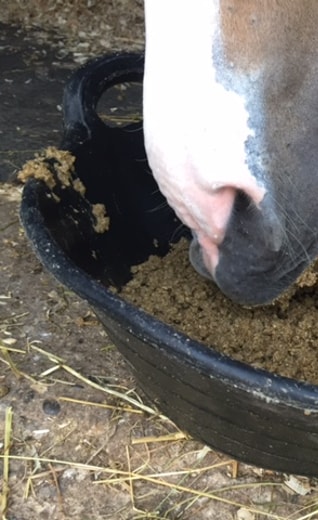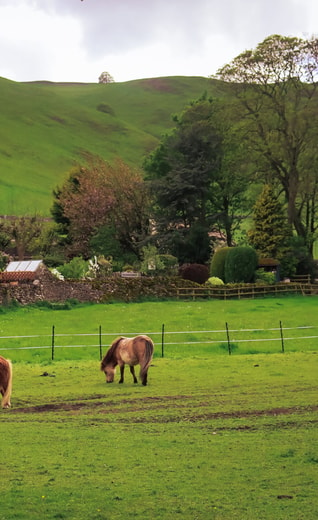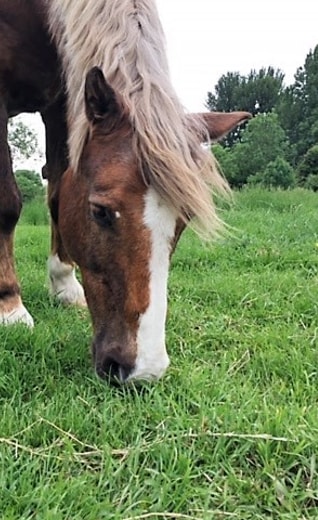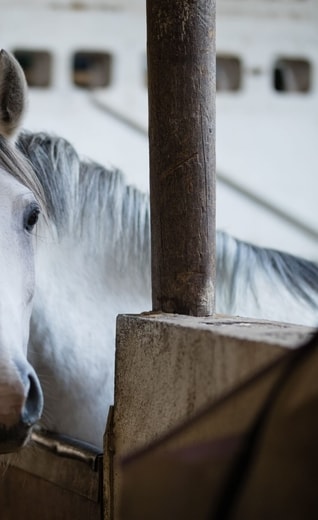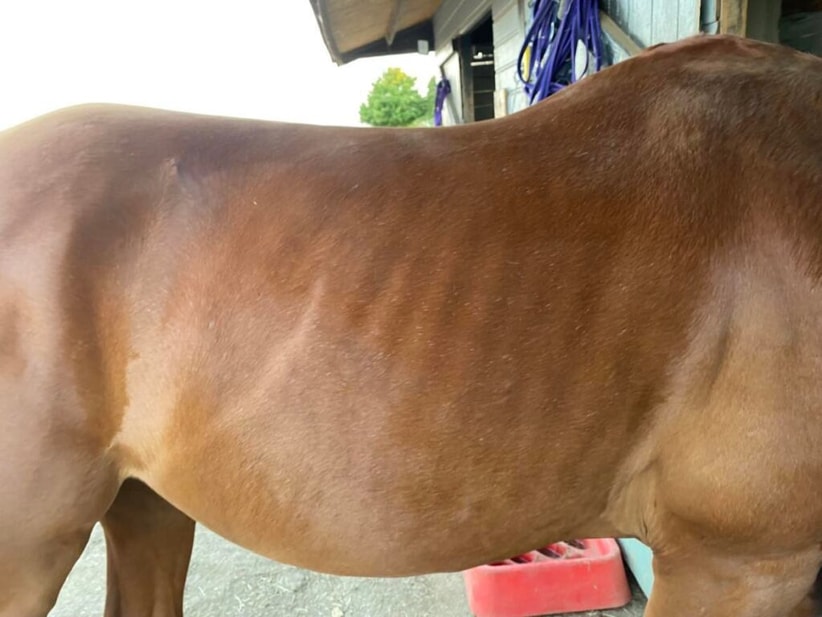
Breaking down the diet: What ex-racehorses need to thrive
Published April 18, 2023Whilst the stereotypical ex-racehorse might be prone to excitability, have poor feet and struggle to maintain weight that’s certainly not the case for all thoroughbreds. Indeed, once settled into their new workloads and routines, many can be incredibly good-doers!
Forage
Regardless of temperament and condition, forage should make the basis of any horse’s diet and should ideally be fed ad-lib. Forage:
- Provides fibre which is essential for maintaining hindgut health
- Increases time spent chewing helping to reduce the risk of gastric ulcers. Saliva provides a natural buffer to stomach acid but unlike people, horses only produce saliva when they chew. The pH in some regions of the stomach is as low as battery acid!
- Provides a valuable source of energy (calories) to maintain condition, helping to reduce the reliance on ‘hard feed’
Although ad lib forage is not always suitable for good doers, total intake should not be restricted to less than 1.5% of current bodyweight (on a dry matter basis) per day. In practice, this equates to approximately 9kg of hay (or 11kg if you intend to soak it first) for a 500kg horse without grazing.
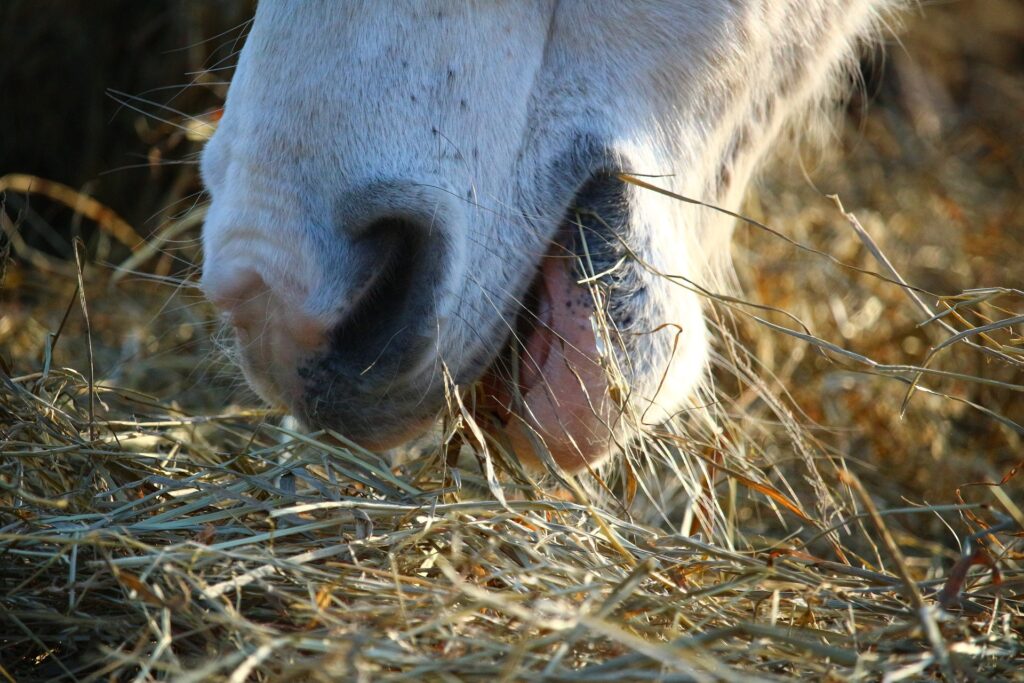
Pre and probiotics
Many horses in race training will be on relatively low forage diets and it can take time for the microbial population to adjust to a new, higher fibre diet. Choosing feeds which contain pre and probiotics or providing additional digestive supplementation may help the transition and promote a healthier digestive system long term.
Gastric ulcers
The prevalence of gastric ulcers is thought to be as high as 90% in racehorse populations, possibly due the combination of intense work, prolonged periods of stabling with little forage and increased stress levels.
Long term nutritional management plays a key role in helping to reduce the risk, frequency and severity of gastric ulcers. Research in collaboration with SPILLERS is the first to show that changes in the diet can help to manage gastric ulcers post omeprazole treatment.
- Make all changes gradually. Racehorses are typically fed large amounts of cereal-based feeds and have none or limited grass turnout. Sudden turnout onto lush paddocks could cause digestive upset. Aim to gradually introduce new feeds and forage sources over a 2-4 week period.
- Research suggests that starch intake should be restricted to less than 1g per kilogram of bodyweight per meal and ideally less than 2g per kilogram of bodyweight per day. As a practical guide, choose feeds containing less than 15% starch.
- Feed small meals adding chopped fibre to help extend eating time. Try to include some alfalfa as the high protein and calcium content may help to buffer stomach acid
- If extra calories are needed oil can be added at up to 100mls per 100kg of bodyweight per day. However simply adding oil on top your horses current feed may unbalance the diet, so consider choosing a feed that already contains a higher level of oil.
- Avoid using electrolyte pastes, especially in those already prone to ulcers
- Consider feeds with the BETA EGUS approval mark but remember these are not the only suitable options.
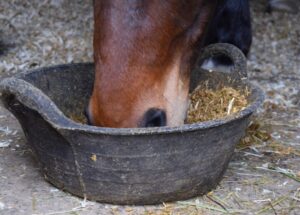
Topline
When first out of training, ex-racehorses will typically look very different to your average riding horse. Their body fat percentage will generally be very low as the racehorse is an athlete so carries little body fat. Often there will be very little covering over the ribs and they can have a somewhat triangular shape to their hindquarters.
An ex-racehorse’s body shape will change over time with a different exercise regime, but it’s important to support this adaption with a balanced diet and adequate levels of quality protein particularly lysine. If sufficient levels are not provided by the diet, the body will break down lean tissue (muscle) to meet requirements. Levels of lysine in forage may be low but rest assured, feeding the recommended amount of a suitable compound feed or balancer will help to ensure that protein and lysine requirements are met. Balancers are the ideal option for horses that maintain weight easily on forage alone and unlike broad spectrum vitamin and mineral supplements, provide additional lysine to help support muscle and topline.
Fat cannot be converted to muscle so whilst it’s important your ex-racehorse is receiving sufficient calories to maintain a healthy body condition, there really is no substitute to correct work. Muscles require correct training and periods of rest in order for the fibres to stretch, repair, lay down new cells and ultimately grow. Simply feeding more protein, regardless of the quality will never achieve optimum results without suitable exercise.

Balanced diet
Providing a balanced diet plays a key role supporting long-term health and well-being. On the flip side, an unbalanced diet may contribute to many issues including poor hoof quality, a dull listless coat or a compromised immune system.
As previously mentioned, not all ex-racehorses are poor doers and some maintain weight easily (or too easily) on forage alone. Forage only diets may be in lacking in key nutrients including copper, zinc, selenium, vitamin E and lysine - this is where feed balancers come in.
Compound feeds (as well as some fibres and mashes) already contain added vitamins and minerals so if you are feeding recommended amount, there is no need to feed a balancer on top. However, many horses and ponies maintain weight easily on less than their recommended ration of feed and as a result, are likely to need a top up of vitamins and minerals. A good rule of thumb is to feed half the recommended amount of balancer if feeding half the recommended amount of compound feed, but our nutritionists are on hand if you would like more specific advice.
Hoof health
The saying ‘no foot no horse’ certainly holds true so it’s not surprising that hoof health is high on the list of priorities for many owners of ex-racehorses. Diet is just one of many factors that affect hoof health including trimming and shoeing, weather, and genetics. It is also worth remembering that due to the time it takes to for the hoof to grow, it can take up to 12 months to see the effects of either reduced or improved nutrition and management.
When it comes to nutrition, providing a balanced diet should be the first priority. Having said this some horses, such as those with particularly poor hoof growth and/ or quality, may benefit from a specialist hoof supplement (in addition a balanced diet). Read more about specific nutrients needed for hoof health here.
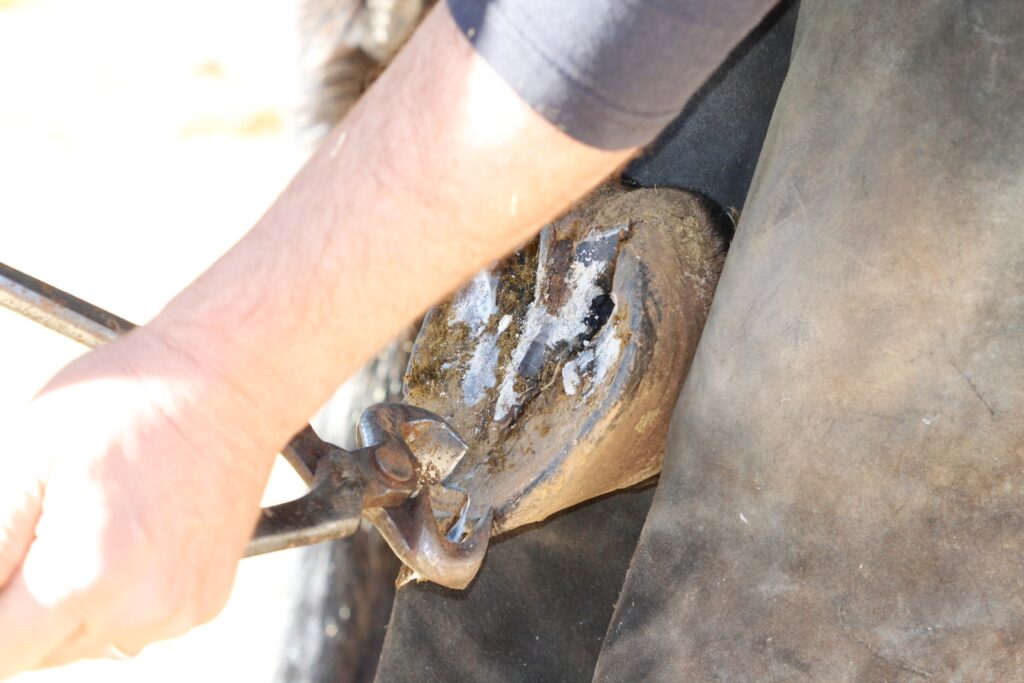
Body condition
It can be challenging to keep your ex-racehorse at a healthy bodyweight once they are out of training as some may need to build up some condition whilst others may be at risk of becoming overweight once their workload is reduced.
Regular body condition scoring will help you to adjust their feed accordingly as their requirements change.
Recommended feeds
If your ex-racehorse maintains weight easily on forage alone we would recommend a combination of Ulca Balancer alongside Alfalfa-Pro Fibre.
Ulca Balancer is a multi-vitamin & mineral balancer for horses and ponies prone to gastric ulcers; with added apple pectin and lecithin to support the sensitive stomach lining, pre and probiotics to support hind gut health and a natural source of calcium and FOS to help maintain a healthy pH in the stomach.
Alfalfa-Pro Fibre is a soft, short chopped fibre ideal for feeding alongside compound feed and balancers. Alfalfa is an excellent source of fibre and low in starch and sugar so supports digestive health and reduces the risk of excitability. It is also naturally high in quality protein to support muscle health and bioavailable calcium which is thought to help buffer stomach acid.
For those needing a little more support to maintain their weight we would recommend Ulca Fibre alongside Digest+ Conditioning Cubes.
Ulca Fibre is proven to help support horses prone to gastric ulcers following veterinary treatment and provides nearly double the calories per scoop than Alfalfa-Pro Fibre whilst still being ultra low in sugar and starch.
Digest+ Conditioning Cubes are the lowest combined sugar and starch conditioning cube on the market, designed to build condition whilst maintaining a healthy digestive system. They contain pre and probiotics to support digestive health and are also molasses free.
Both Ulca Fibre and Digest+ Conditioning Cubes contain a full complement of vitamins and minerals so when fed at the full recommended ration will provide a balanced diet.
If your ex-racehorse is lacking energy under saddle and needs a little more sparkle we would recommend a controlled starch mix such as Performance Mix. It delivers a careful balance of energy sources to fuel performance and maintain optimum condition as well as additional pre and probiotics to support digestive health.
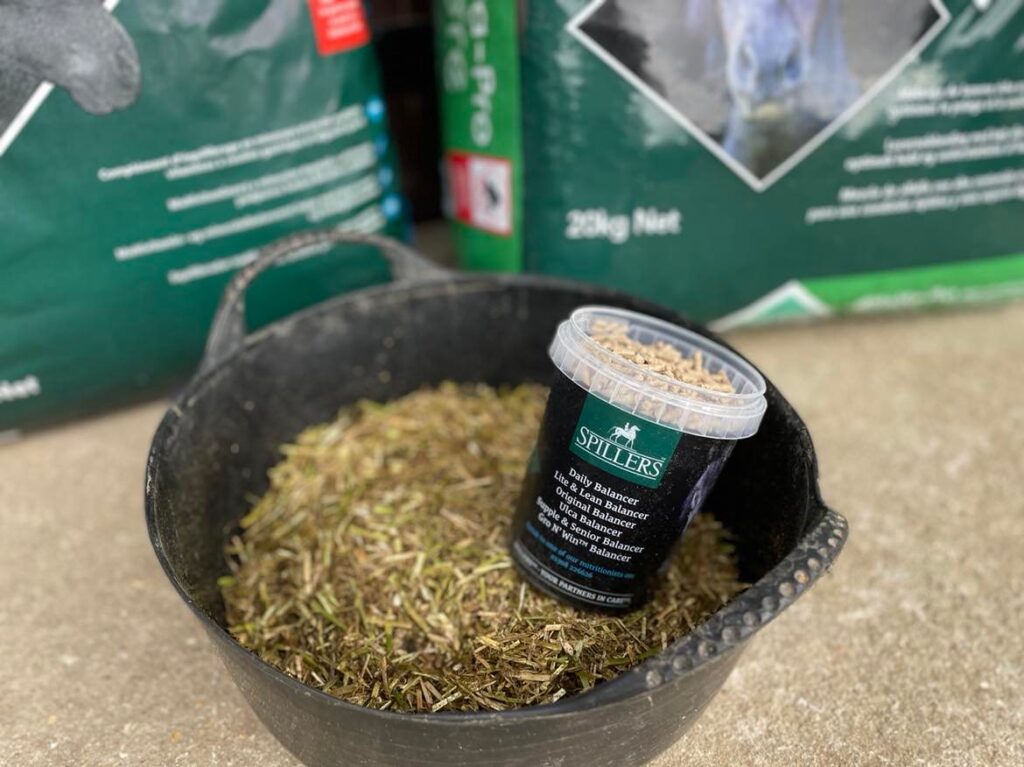
If you’re unsure which feed is most suitable for your ex-racehorse, or would like more advice on any of the above discussed topics, do not hesitate to reach out to our friendly team of nutritionists via 01908 226626 or email [email protected]
